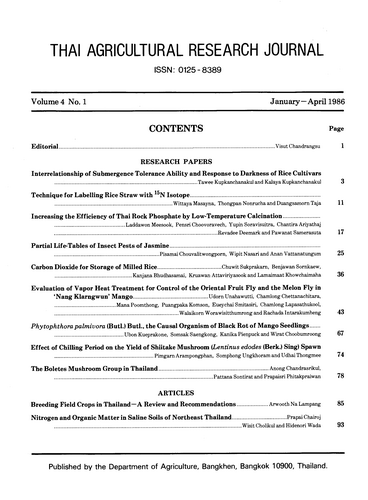Phytophthora palmiuora (Butl.) Butl., the Causal Organism of Black Rot of Mango Seedlings
Abstract
The occurrence of black rot of mango seedlings was first recorded and reported in Loei Province of Northeast Thailand in 1984. It was subsequently also observed in mango seedling plots in plantation areas of Pak Chong District of Nakhon ratchasima Province, and Bangkok Noi District of Bangkok. The disease is most prevalent in the wet season in crowded seedbed conditions. Symptoms of the disease include the wilting of the plant and the occurrence of black lesions on the root, base and trunk of the seedling, sometimes resulting in the death of seedlings less than two months old. In older seeldings, black lesions are seen on teh seedling trunk, with the splitting of the bark and development of canker in teh area of the lesion; however, older seedlings do not usually die.
Isolation of samples of the diseased tissue using BNPRA and BNPRAH media produced 17 isolates of Phytopthora sp. from 20 diseased samples. Taxonomic studies on sporangia, chlamdospores, oogonia, antheridia and oospores of the fungus, indicated that the causal agent of black rot to be Phytophthora palmivora (Butl.) Butl. Koch's spotulates wee carried out, with th einoculated seedlings showing the sam esymptoms as observed under field conditions.
Downloads
Published
How to Cite
Issue
Section
License
Thai Agricultural Research Journal


